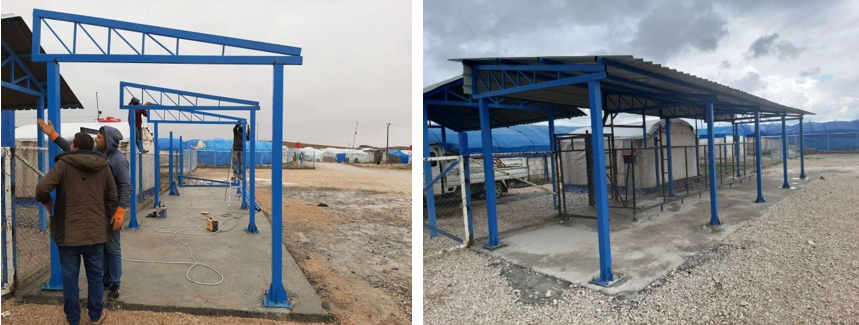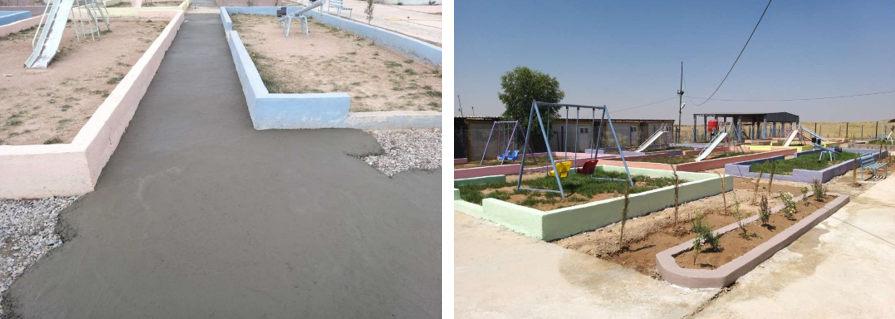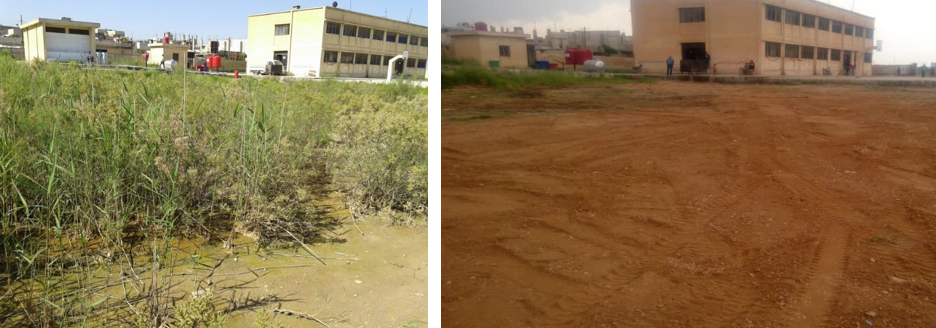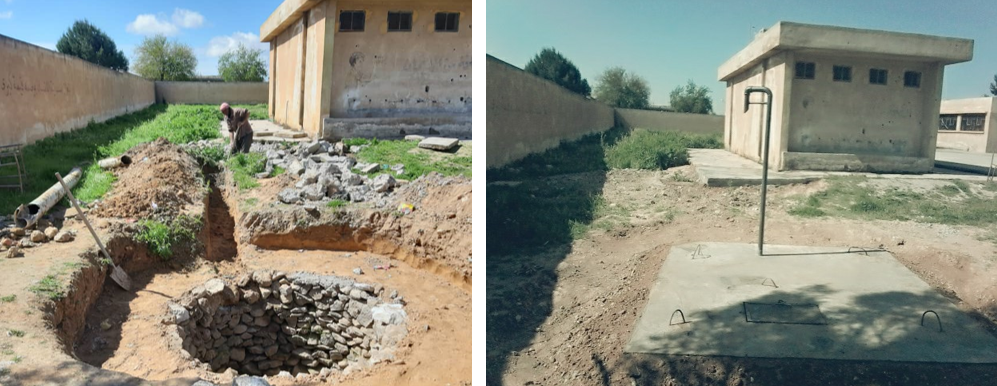Providing adequate living conditions allows displaced communities to live with dignity as they look for an opportunity to start over.
Families displaced from war and conflict often end up in refugee camps or other informal settlements miles away from their homes. The traumatic experience is made worse when living conditions are inadequate. As refugees and internally displaced persons (IDPs) strive for an opportunity to start over, our teams on the ground are working hard to provide displaced people with a home they can feel safe and comfortable in, despite their difficult circumstances.
Improving Living Conditions
Maintenance services range from large projects – road rehabilitation, solid waste management, or light installation – to smaller activities that often go unnoticed – cleaning latrines, pulling weeds, or repairing tents after rainstorms. Continuous assessments are conducted to ensure that gaps are identified and responded to in a timely manner.
“There are many small things that are needed every day that people may not think about. Inside the camp, when anything happens, it needs a quick response,” Daleel, a Blumont site engineer in northeast Syria, said. “Today, for example, a sewage line was clogged. Having local staff on-hand allows us to immediately fix issues like these and conduct rapid-response activities.”
IDPs not living in camps can often take refuge in collective centers, usually abandoned school buildings. These schools are often more than 50 years old and were not designed to house anyone, let alone 70 to 100 people at once. Most have not had any maintenance work done since the start of the Syrian War.
“You can imagine the horrendous living conditions caused by something like broken sewage pipes,” Kaniwar, a Blumont site engineer at the Hassakeh collective centers, said. “I remember one of the residents coming up to me after we finished fixing their sewage system and said, ‘I haven’t been able to sleep through the night for the last three months because of the smells. You saved us. Tonight, we can sleep in peace.’”
Seeing the Impact
The work can be challenging at times but seeing the change it brings about for displaced communities makes it worth the effort for our teams.
“When COVID-19 began, there was fear among people that Blumont would leave and stop operations in the camp,” Daleel said. “When the camp residents saw our staff coming in to complete maintenance work, they came to the site management team and expressed their gratitude, saying ‘As long as you’re here, we know the situation will get better.’”
“The beauty of this work is that moment when you watch people physically see their circumstances changing and improving before their eyes because of the work you did,” Kaniwar said. “You are changing their reality and alleviating a portion of the burden they carry. Putting smiles on people’s faces or seeing children being able to play outside again adds a whole new meaning to being an engineer.”
Field Work

“The lack of lighting in the latrines made me worry about my family members when they went to use the bathroom at night, as the unit was located at a distance from our tent. Once electricity and light were installed in the bathrooms, I felt more comfortable allowing my family to walk outside at night,” said Hussein, a 26-year old Iraqi refugee living in northeast Syria.

Humanitarian workers often use distribution points where refugees gather to pick up relief items. Our team in northeast Syria built canopies for beneficiaries to stand under during the distribution process to protect them from harsh weather conditions.
“The other day I saw women with their children waiting under the canopy, protected from the sun, to receive their food rations. I will never forget that feeling when I saw my work helping people. Moments like these make me proud,” Mehdi, a Blumont site engineer, said.

In one of the camps in northeast Syria, there was a lack of dedicated spaces for children to entertain themselves and interact with each other. Instead, children often spent their time playing in the mud, with stones, in alleys, or in front of organizations’ headquarters. Blumont constructed playground areas in camps across northeast Syria to provide children and their families with a safe space to enjoy quality time together.

Before and After
In some collective centers, the latrines were far from where people live. It was unsafe for people to walk through fields as they attracted insects, snakes, and scorpions because of the weeds that grow around the centers in the spring season. Our team cleared these paths and paved roads so residents can get to the bathrooms more easily.

Before and After
Sometimes, doors in these centers didn’t have locks, so families lacked privacy and a feeling of security.
“When we rehabilitated the buildings and installed locks, people couldn’t believe their eyes. The living conditions are not perfect, but they have improved almost 180 degrees from when we first started our maintenance work,” Kaniwar said.

Before and After
Uncovered manholes pose a threat for women and children to fall in. Our engineers in centers make sure to install covers over them for the safety of the residents and to prevent bad odors from spreading.



